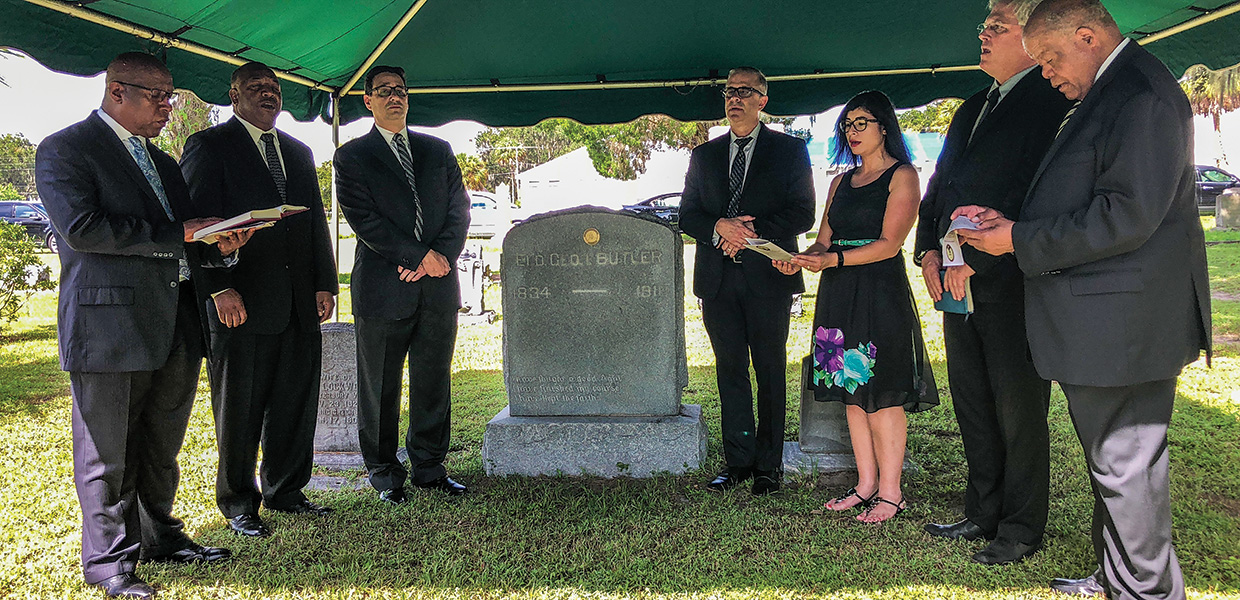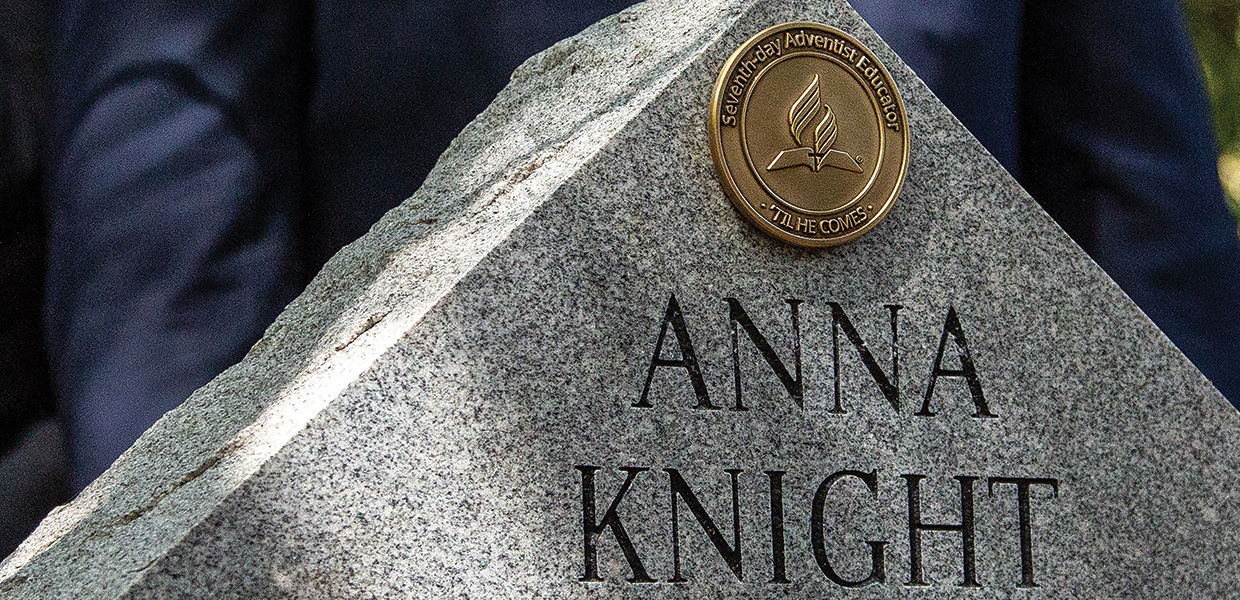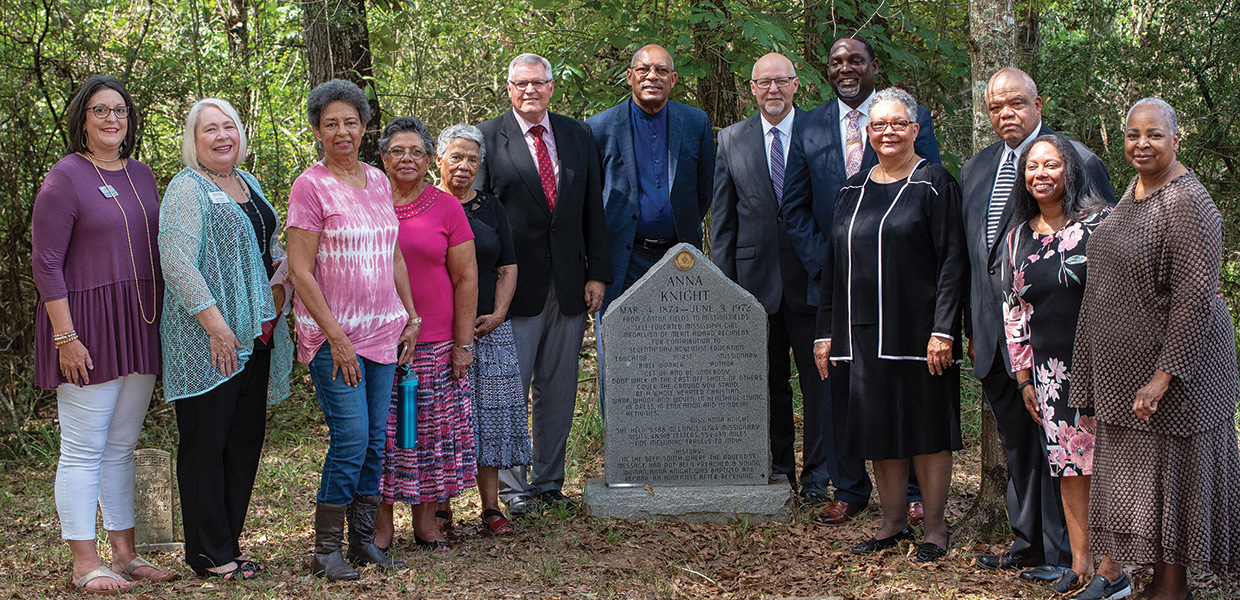
R. Steven Norman III


R. Steven Norman III

Christopher Thompson

R. Steven Norman III



Ronald Henry
God is not unjust; he will not forget your work and the love you have shown him as you have helped his people and continue to help them,” Hebrews 6:10 NIV.
In just about every war, individuals who have defended our nation have been recognized for their service. Many times that recognition has come after they are deceased, and it is more than deserved.
What if there was something to recognize Seventh-day Adventists who have served on the spiritual battlefield winning souls for Christ? Just like men and women in the U.S. Armed Forces receive medals, what if there was something like a medallion that could be placed on the grave markers of Adventist clergy and educators in recognition of their service?
R. Steven Norman III, Southern Union communication director, came up with the idea for such a medallion.
“I was walking in a cemetery and noticed a medallion for Methodist clergy,” Norman said. “There are also medallions for U.S. military veterans. I decided to develop a medallion that can be placed on the grave markers of Seventh-day Adventist clergy and educators who give so much of their lives building the Kingdom of God. It is a tribute to their service and a way to express the Church’s gratitude to their families.”
The Seventh-day Adventist Clergy Memorial Medallion was developed by the Southern Union Communication Department in collaboration with Roger Hernandez, Southern Union ministerial director, and Debra Fryson, Southern Union education superintendent.
Inscribed at the base of the medallion is the phrase, “’Til He Comes.” Norman explained how that inscription came about. He said Charles E. Bradford, former retired North American Division president, mentioned including a reference to the second coming on his mother’s grave marker.
“I began to look through cemeteries everywhere, and saw angels, crosses, and lambs, but no mention of the second coming. So the medallion saysʽ̓Til He Comes’ to commemorate the hope of every educator and minister who died in Christ Jesus. It is a silent witness.”
Hernandez said that one of his hardest moments as a ministerial director was “participating in the funeral of a pastor.”
“When we are able to give the medallion to a grieving family, and we are leaving the place of rest, the medallion will stay as a testament that death is not final, for we have a blessed hope,” he said.
Fryson agreed.
“The memorial medallion provides a way for the Church to acknowledge the dedicated service teachers and pastors have given to ministry,” she said. “Families value knowing that the toil and sacrifice of their deceased loved one is appreciated and has not gone unnoticed.”
Medallions will be presented at the funerals or memorial services of all clergy and educators who served the Seventh-day Adventist Church. Families will then arrange to have the cemetery or funeral home affix them to the deceased’s grave marker.
Two of the first medallion installation ceremonies were held recently to recognize George I. Butler and Anna Knight. Butler died on July 25, 1918. After his funeral in Oakland, California, his body was shipped to Bowling Green, Florida, where he was buried that August. One hundred years later, church leaders from the Florida and Southeastern conferences, along with the Southern Union, gathered at his grave at 11 a.m. on August 28, 2018, to pay tribute to Butler’s service to the World Church as president of the General Conference (1871-1874 and 1881-1888), as well as to the Southern Union and Florida Conference where he was president of the Florida Conference (1901-1904), and Southern Union (1902-1907).
Tim Goff welcomed the visitors, and a biographical profile was presented by R. Steven Norman III. Then Gregory Mack, Allan Machado, and Roger Hernandez placed the newly minted Seventh-day Adventist Clergy Memorial Medallion on his grave marker. The brief but historic service concluded with everyone joining Clarence Wright in singing “We Have This Hope.”
The following month a medallion ceremony was held at 11 a.m. for Miss Knight on September 17, 2018, in Soso, Mississippi. Knight died June 10, 1972. She was the first female missionary, teacher, assistant director of education, Young People’s Missionary Volunteer, and home missionary secretary for the Southeastern and Southern unions from 1909 until her retirement in 1946.
Those who attended Knight’s ceremony included Benjamin Jones, South Central Conference president; Meshach Mauia, pastor of the Soso Church; and Dorothy Marsh, one of Knight’s nieces.
“My sister Florence and I express our sincere appreciation and thanks for recognizing our aunt Anna with the Educator Memorial Medallion,” Marsh said. “It is truly a testament to her legacy.”
Families that would like to receive a medallion for a deceased loved one who has passed away since January 1, 2017, may request a medallion from their conference ministerial or education department. Families who would like to receive a medallion for clergy or educators who died prior to January 1, 2017, may order one from AdventSource starting January 20, 2019.
“Imagine walking through a cemetery and seeing ‘Seventh-day Adventist Educator’ or ‘Clergy’ and ʽ̓Til He Comes,’” Norman said. “What a testimony to Christian service and a witness to Christ’s second coming!”
Additional photos will be available on the southernunion.com website soon.
Quick Facts about George I. Butler
1834 – Born to Ezra and Sarah Butler on November 12, in Waterbury, Vermont.
1856 – Accepted Christ and baptized by James N. Andrews.
1865-1872 – President of Iowa Conference.
1867 – Ordained with James White and Elder Bourdeau officiating.
1871-1874 – President of General Conference. Established Battle Creek College and Pacific Press Publishing Association.
1884 – Laid groundwork for publishing houses in Switzerland, Norway, and England.
1901-1904 – Succeeded L.H. Crisler as the second president of the Florida Conference in December 1901.
1902-1907 – Elected second president of the Southern Union and the Southern Publishing Association in January 1902.
1915 – Attended Fall Council at Loma Linda and influenced future of Loma Linda University.
1918 – Died July 25.
Quick Facts about Miss Rachel Anna Knight
1874 – Born to Newton and George A. Knight in Jasper County, Mississippi.
1891 – Learned about Sabbath and Seventh-day Adventists from Ida Embree, an employee of the Signs of the Times office in Oakland, California, and W.W. Eastman, a colporteur in Texas.
1892 – Prepared for church membership and baptized by Dyo Chambers of Chattanooga, Tennessee.
1898 – Graduated from Battle Creek Sanitarium Training School for Missionary Nurses in Battle Creek, Michigan.
1901-1907 – Volunteered for missionary service to India In May of 1901, while attending the General Conference session in Battle Creek. Worked in Calcutta as a nurse, Bible worker, and teacher.
1907-1909 – Returned to Mississippi in 1907, and employed by the Mississippi Conference as a Bible worker, and teacher at the Gitano School.
1909 – Purchased 40 acres of land from J.H. and Candis Knight. Also moved to Atlanta, Georgia, to take charge of the colored sanitarium and serve as its medical matron. Taught night courses at the local church school.
1915-1920 – Went to Southeastern Union Conference where she served as home missionary leader, Young People’s Missionary Volunteer secretary, and education secretary. Became a member of the Oakwood College Board under the presidency of J. Tucker.
1922 – Became first president of the National Colored Teachers Association, a position she held for 27 years.
1952 – Published her autobiography, Mississippi Girl, which became a reading book for the members of the Young People’s Missionary Volunteer Society.
1972 – Died June 10.
is a former reporter for The Associated Press. He is also author of the book, Finding the Good, which was featured on National Public Radio.
Southern Union | November 2018



Comments are closed.